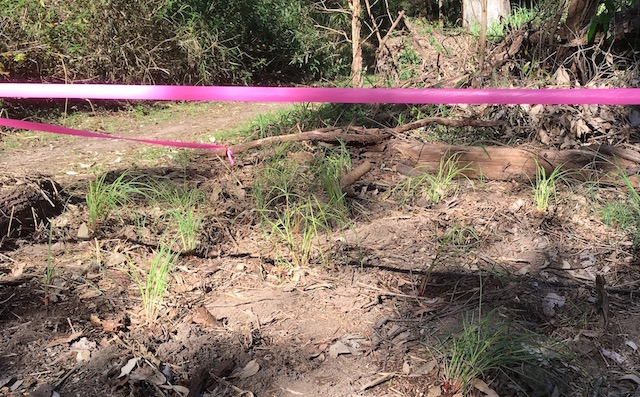
We are attempting to re-introduce Barbed wire grass (Cymbopogon refractus) by experimenting with different cultivation methods. This grass is native to eastern Australia and is tolerant of low nutrient soil and dry conditions. It is found naturally in dry sclerophyll forests similar to the one that slopes away from Ekibin Creek. This species was so named because the seed-containing flower-heads resemble barbed wire. It is related (same genus) to lemon grass with which it shares a distinctive smell when crushed. We are particularly interested in its ecological function as a habitat for small mammals and birds such as fairy wrens.
As mentioned previously, re-introduction of natives in areas dominated by exotic grasses is difficult. Unless carefully managed, native grasses are prone to infiltration by the exotics which then out-compete them and are hard to remove when co-mingled. In 2015 we experimented with by planting Cymbopogon refactus with weed mats to suppress other exotic grasses. This was reasonably successful, but further dispersal is still constrained by surrounding weeds. For our 2016 trial we have planted into a cordoned plot which can be monitored for infiltration. This plot consists of newly cleared land which had previously hosted lantana. It is thus quite fertile while maintaining a small load of remnant weed seeds. Our long-term aim is to provide native habitat creation and to eventually replace of the large Para Grass stand that is adjacent to the plot.